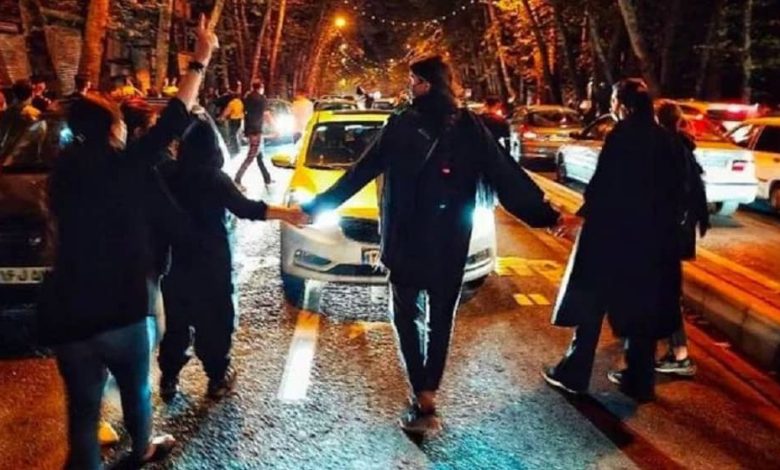Iran Regime’s Plan to Use Soleimani’s Death Anniversary, Backfires

Written by
Moussa Afshar
The Iranian regime’s massive propaganda on the death anniversary of Qassem Soleimani has ended. While the ruling theocracy put much effort into mobilizing its demoralized forces amid the ongoing uprising, the entire circus became whack-a-mole and immediately backfired.
This campaign began on December 27 during a state-staged rally for the so-called burial of dozens of allegedly remaining soldiers killed during the Iran-Iraq war that ended in 1988. From December 27 to January 7, the clerical regime’s propaganda machine incessantly praised Soleimani, trying to portray him as a national hero.
Soleimani was the commander of the Revolutionary Guards (IRGC) extraterritorial Quds Force. He was a war criminal who oversaw the regime’s terrorism spreading in the region and across the globe. His presence in Syria and ruthlessness in killing innocent Syrian civilians made him infamous as the “child killer.” He played an active role in oppressing the nationwide uprisings in Iran and orchestrated the regime’s terrorist attacks against its main opposition group, the People’s Mojahedin Organization of Iran (PMOI/MEK), mainly when they were in Camp Ashraf and Camp Liberty in Iraq.
January 11 – Maragheh, northwest #Iran
Protesters set ablaze a sculpture of former IRGC Quds Force chief Qassem Soleimani early this morning local time.#IranRevoIution #FreeIran2023 pic.twitter.com/BHsKlI9bQB— People's Mojahedin Organization of Iran (PMOI/MEK) (@Mojahedineng) January 11, 2023
Tehran‘s propaganda campaign had several objectives. First, the regime started a series of state-staged rallies to counter protests while claiming victory over the ongoing popular revolt. “Fortunately, the riots have ended due to the efforts by people and our devoted security forces,” the regime’s president Ebrahim Raisi said on December 27, addressing the state-staged circus.
“The enemy used its full potential and mobilized its trained forces but failed miserably,” Hossein Salami, the IRGC’s commander-in-chief, said on December 27, according to the state-run Tasnim news agency.
The regime’s second objective of this failed campaign was to portray Soleimani as the symbol of power and unity in a bid to boost the morale of the demoralized security forces. This was indeed a contradictory goal, as the so-called “symbol of power,” who was also praised by the regime’s pundits as “the mighty shadow commander,” was killed during a U.S. drone attack in 2018 near the Baghdad airport in Iraq. Besides, the endless obituaries published by state media, highlighting that “Soleimani” was an irreplaceable figure for the supreme leader Ali Khamenei, also indicated Tehran’s failure to bring forth an authority of the same caliber.
Above all, the Iranian people’s reaction to Soleimani’s death anniversary delivered the last, yet the heaviest” blow to the regime’s propaganda campaign. Defiant youth torched hundreds of Soleimani’s banners, along with dozens of its statues across Iran. They followed the footsteps of the MEK’s “Resistance Units,” who have been carrying out similar operations in recent years; more brave youth took part in these daring actions that aimed to defy the dread implemented by the regime’s vast security network on society. Furthermore, Iranian netizens made fun of Soleimani and created jokes about Khamenei’s hatchet man as “Cutlet”.
These reactions happened while Salami boasted on January 7 that “The enemy tried to influence our youths, but in the last ten days, all these efforts failed as the enemy saw the youth’s dedication to martyr Soleimani.”
On the contrary, the countless torching of Soleimani’s banner made headlines, once again confirming for the outside world that the people of Iran are at odds with the regime and whatever and whoever is representing it.
The clerical regime’s main objective was to declare victory over what its officials consider “riots” and independent observers and experts consider a “revolution.” To seal its victory, the genocidal regime hanged two arrested protesters, Mohammad Mehdi Karami and Mohammad Hosseini, on January 7 and replaced the head of the State Security Forces with another ruthless henchman, Ahmadreza Radan.
January 9 – Karaj, west of Tehran, #Iran
Locals gathering outside Gohardasht Prison in the early hours after midnight, in support for prisoners, began chanting:
"I will kill those who killed my brother!"#IranRevolution.#StopExecutionsInIran
pic.twitter.com/j0zQtFeE9z— Women's Committee NCRI (@womenncri) January 10, 2023
Yet the mullahs’ plan backfired as people took to the streets to condemn these brutal hangings. The regime’s failure became more evident at the dawn of January 8, when angry people and defiant youth protested in front of the Gohardasht prison to prevent the imminent execution of two other detained protesters, Mohammad Ghobadlou and Mohammad Broughani. This demonstration lasted until Monday morning in front of a prison where most of the political executions in the last decades happened, thus turning the place into another symbol of oppression. The protesters chanted slogans such as “This is the last message; if you execute, there will be an uprising,” “I will kill who killed my brother,” and “When one falls, thousands rise.”
In a nutshell, Tehran’s costly campaign on Soleimani’s death anniversary failed and, in fact, increased public hatred toward the regime.
The Iranian people’s reaction despite the regime’s crackdown once again confirmed their determination to achieve freedom and democracy. This right should be recognized by the world community. Otherwise, any negligence in firmly dealing with the regime only emboldens it to carry on with its killing spree.

